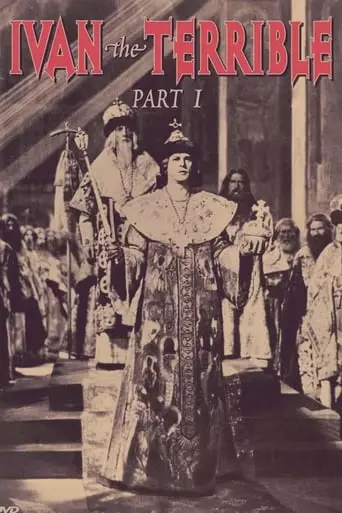
Ivan Groznyy (1945) Watch Online Free
Set during the early part of his reign, Ivan faces betrayal from the aristocracy and even his closest friends as he seeks to unite the Russian people. Sergei Eisenstein’s final film, this is the first part of a three-part biopic of Tsar Ivan IV of Russia, which was never completed due to the producer’s dissatisfaction with Eisenstein’s attempts to use forbidden experimental filming techniques and excessive cost overruns. The second part was completed but not released for a decade after Eisenstein’s death and a change of heart in the USSR government toward his work; the third part was only in its earliest stage of filming when shooting was stopped altogether.
Ivan the Terrible, Part I, directed by Sergei Eisenstein in 1944, is a Soviet historical drama that chronicles the early years of Tsar Ivan IV’s reign. The film begins with Ivan’s coronation in 1547, where he is crowned as the first Tsar of all Russia. Despite his noble intentions to unify and strengthen the Russian state, Ivan faces immediate opposition from the boyars, the aristocratic class, who are resistant to his reforms and centralization efforts. The narrative delves into Ivan’s internal struggles and his growing paranoia as he contends with betrayal and conspiracies within his court. The film portrays his complex character, highlighting his transformation from a promising leader to a ruler marked by suspicion and authoritarianism.
Upon its release, Ivan the Terrible, Part I received critical acclaim for its innovative cinematography and compelling narrative. The film’s stylized visuals and dramatic storytelling set new standards in Soviet cinema. However, it also faced criticism from Soviet authorities, particularly from Joseph Stalin, who found the portrayal of Ivan’s character unsympathetic and the depiction of the oprichnina too similar to fascist organizations. This led to the banning of Part II in 1946, and the film was not fully released until 1958.
Viewing Ivan the Terrible, Part I is likely to evoke a range of emotions, from admiration for its artistic achievements to contemplation of the complex themes it presents. The film’s intense portrayal of power, betrayal, and isolation may leave you reflecting on the nature of leadership and the personal costs associated with it. The innovative cinematography and compelling narrative are likely to engage you intellectually and emotionally, providing a profound cinematic experience. Overall, the film offers a thought-provoking exploration of the complexities of power, leadership, and the psychological toll of ruling, leaving you with a deeper understanding of the challenges faced by historical figures like Ivan IV. The film’s visual style and its dramatic use of music will likely resonate with you long after the credits roll, as it creates an atmosphere of tension and intrigue that lingers.
After watching Ivan the Terrible, Part I, you may feel a sense of awe at Eisenstein’s ability to blend history, art, and political commentary. The film challenges the viewer to think critically about the nature of tyranny, the moral compromises of leadership, and the personal sacrifices involved in consolidating power. Additionally, the film’s portrayal of Ivan as both a visionary leader and a paranoid ruler may leave you reflecting on the complexities of human nature and the fine line between heroism and villainy.
The film’s stylistic and symbolic elements will likely provoke thought about how cinema can reflect and shape political ideologies, particularly in the context of Soviet Russia during Stalin’s reign. If you are a fan of classic cinema, you will likely appreciate the technical mastery of Eisenstein’s direction and the film’s influence on the development of modern filmmaking. The blend of history, art, and ideology makes Ivan the Terrible, Part I an intellectually stimulating and emotionally charged film that is sure to leave a lasting impact on its audience.
In conclusion, after watching Ivan the Terrible, Part I, you will likely feel both intellectually challenged and emotionally moved by the film’s portrayal of a complex historical figure and the moral dilemmas that come with the pursuit of power. The film’s artistic achievements and historical significance make it an essential watch for anyone interested in the intersection of cinema, history, and political ideology.
